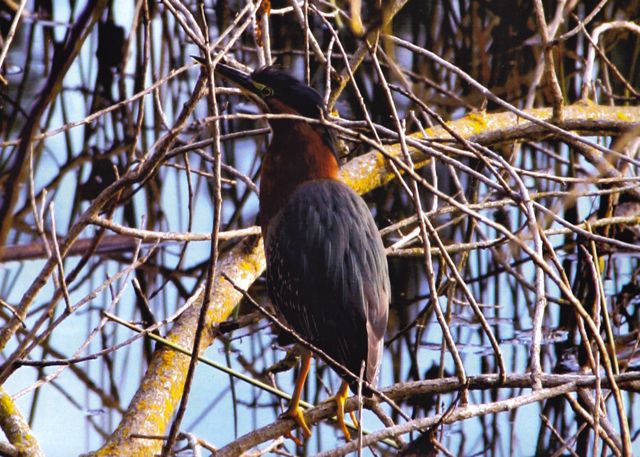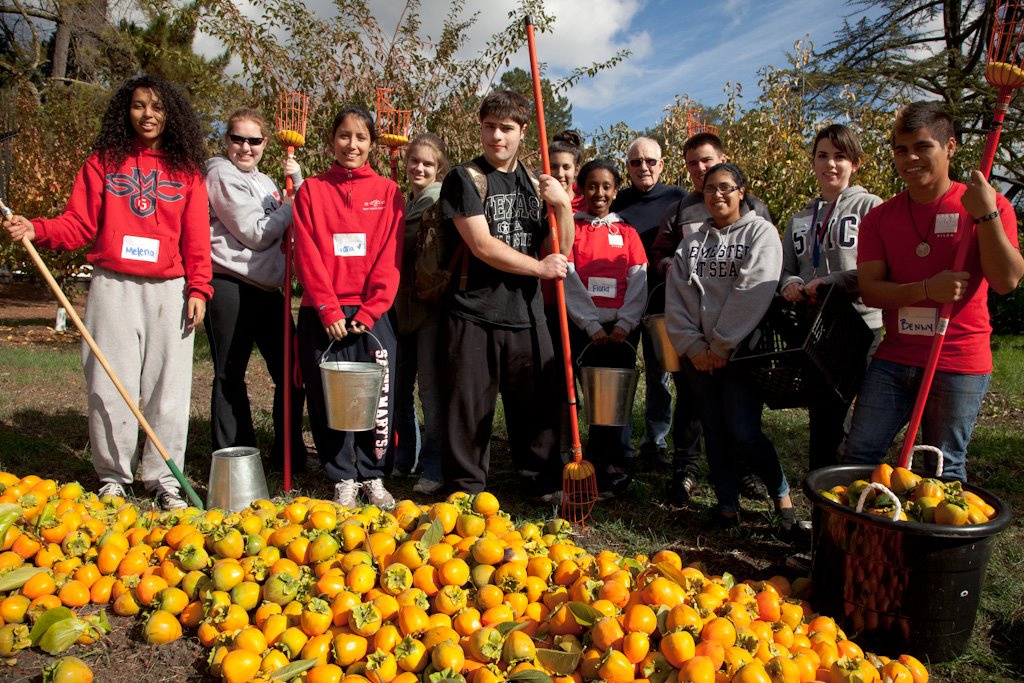Thanks to all the wonderful volunteers and donors who have made this gift to our community possible. The Lafayette Community Garden and Outdoor Learning Center will begin construction in the new year and it would not have been possible without their help and support! Click here if you would like to make a tax deductible donation and join this community-wide effort. Merry Christmas and Best Wishes for a wonderful 2012!
This Green Heron was photographed by Steve Hobbs at the Lafayette Reservoir. Now is a great time to get a 2012 Calendar featuring the Lafayette Reservoir and benefiting the Lafayette Chamber of Commerce. You can pick one up at Orchard Nursery.
Learn more about Green Herons here.
From out friends over at The Community Gardens website:
Many people are fond of ladybugs because of their colorful, spotted appearance. But farmers love them for their appetite. Most ladybugs voraciously consume plant-eating insects, such as aphids, and in doing so they help to protect crops. Ladybugs lay hundreds of eggs in the colonies of aphids and other plant-eating pests. When they hatch, the ladybug larvae immediately begin to feed. By the end of its three-to-six-week life, a ladybug may eat some 5,000 aphids.
.
And speaking of wild foods, here is Kim Curiel in LamorindaPatch:
My favorite thing to forage is a green that kept the 49ers alive and healthy — not the football team, but the pioneers; Miner’s Lettuce. It’s a succulent green that has easily identifiable leaves (they’re round with a small cream colored flower in the center) and has a delightful crunch. The leaves make a first rate salad. This juicy plant grows in shady areas, usually near water and can be found in the cooler months of the year after it has rained a bit.
Around November my mouth starts watering as I contemplate the dishes I’ll make with our local gold: chanterelle mushrooms. Sold in local stores and available at the finest restaurants, golden chanterelles grow in our shaded, live oak forests only after we’ve received four inches of rain. This tender delicacy grows November to March. Sorry, I’m not going to give you specific spots where I’ve found them. That’s one secret I plan to keep. But if you own a north sloped property with live oaks or know someone who does, go out and look under the duff to see if any orange/yellow mushrooms that have no gills, have emerged. Chanterelles have false gills and no defined cap.
Mushrooms need extra caution. Two mushrooms grow in our hills that are documented as the most toxic things on earth, the Death Cap and the Destroying Angel. These are both white or cream colored with gills and look nothing at all like a chantrelle. They can both melt your liver in less than 24 hours. To survive you must get a liver transplant. Every year someone who recently migrated here from Southeast Asia dies because these mushrooms look identical to safe mushrooms that grow in their homeland.
Now where is that rain? Check out Kim’s other posts here.
Kevin Feinstein – aka ferelkevin – guided a class on edible wild plants at Sienna Ranch in Lafayette today. See his new book here. (For some reason you need to open this post to see the links.)
[slideshow]Last night our request for a building permit was approved by the City of Lafayette Planning Commission. Thanks to all our friends and supporters we now have enough money to start building our fence and garden beds. We look forward to building community as well.
The next step is to formalize an agreement between the City and EBMUD.
We plan to hire a garden manager in January to help coordinate our efforts.
Check back here for regular updates on fundraising, garden membership and our official groundbreaking.
Persimmons are in season and 12 bighearted volunteers from Saint Mary’s College helped glean a ton, (well 750 pounds) of fruit for Monument Crisis Center. And while they were at it, they picked three boxes of damaged persimmons and fallen pears for Lindsay Wildlife Museum. Not bad for 4 hours of work! Happy Thanksgiving.
Jeff Spurier has just finished a year long project for the LA Times reporting on the Community Gardens across Southern California. Here is his final post.
Community Gardens Dispatch No. 52: The end
It’s transition time in the garden. For me, that means the end of my year in the community garden.
This series began after I graduated from the UC Cooperative Extension’s master gardener class in spring 2010. My education continued in community gardens from Ventura to Long Beach, from the foothills to the coast, from the inner city to the ex-urbs.
Microclimates, demographics and histories of the gardens may have differed, but one commonality stood out: No matter the ZIP Code, gardeners were generous with their time, expertise, seedlings and harvest. It sounds like a cliche (or a statement of the obvious) to say that community gardens build community, but after seeing how these gardens can be good neighbors, raising property values and welcoming newcomers with open arms (and full sun), the cliche just sounds like fact.
…And though just about everyone grew tomatoes and beets, spinach and cauliflower, I always found a surprise planted in there too: minari, a Korean herb used in kimchee; the diminutive dog’s tooth pepper, which packs a wallop; moringa, a fast-growing, drought-tolerant tree. And did you know you can grow coffee, tea and all types of mango and papaya here? I didn’t.
This vast variety of edibles, flowers and other flora from around the world will be the subject of my new series for L.A. at Home: the Global Garden, a trip down a cross-cultural path that winds through Southern California. In many ways the new series will be an extension of this one — a reflection of our community as seen through what we plant. Stay tuned.
Read it all here.
Very cool article in The Smithsonian about How the Potato Changed the World.
Many researchers believe that the potato’s arrival in northern Europe spelled an end to famine there. (Corn, another American crop, played a similar but smaller role in southern Europe.) More than that, as the historian William H. McNeill has argued, the potato led to empire: “By feeding rapidly growing populations, [it] permitted a handful of European nations to assert dominion over most of the world between 1750 and 1950.” The potato, in other words, fueled the rise of the West.
Ashland has more going for it than the Oregon Shakespeare Festival. For instance they have an inspiring, educational, nature center with demonstration gardens each designed with a unique theme: the Butterfly Garden, Reptile and Amphibian Garden, Herb Garden, Heirloom Garden, Native Plant Garden and Bird Buffet. Interpretive materials help learners of all ages self-navigate the garden. In addition to building community, this Outdoor Learning Center shares information about local wildlife, sustainable agriculture and native plants. Lots of great ideas for us to build on in Lafayette.







